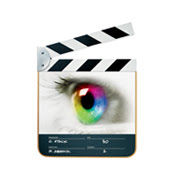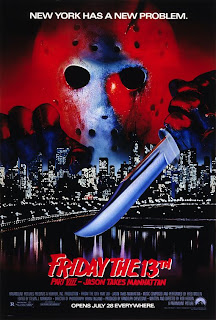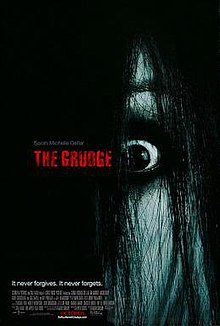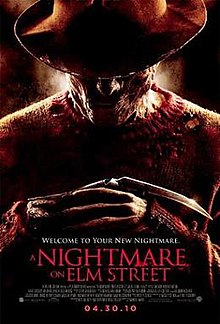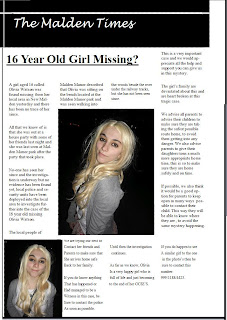Wednesday 29 February 2012
Problems encountered during our project.
Organisation
- We often forgot our equiptment and lost props, which reduced our filming time.
- We were always in our location looking around,talking rather than just getting on with the filming.
- There were times when members of our group showed up late, or were absent.
- Our planned meetings oftenly changed day.
- It snowed which slowed down our filming by two days.
- Transport to the locations often took too long.
- Sometimes we would talk over each other so our thoughts weren't heard.
- Our ideas weren't always expressed clearly.
- We would often have arguments over our ideas.
- It was challenging to contact members at times to meet up at the same time.
- The lighting would oftenly be too dark so it caused poor lighting.
- We forgot to charge the camera battery, so therefore it ran out quickly.
- There was often a lot of traffic or noises in the background while we were filming which made it hard to hear the characters speaking.
- At one point the camera was attatched too tight to the tripod, which caused a squeeking noise on the camera when filming.
- There were often times when one person did more than the other.
- Sometimes there was way too much fussing about.
- Group didn't always make agreements.
Wednesday 22 February 2012
Tuesday 21 February 2012
Using final cut for the first time
In our last meeting I learnt how to edit using final cut. This was a very hard process and was very hard to get used to, but eventually I learnt the simple things and hopefully will learn the more exciting and better things later on when editing. This is the very first time I became familiar with the software but not the first time using Imovie, or learning how to import our shots. Hopefully my editing skills will keep on improving.
Monday 20 February 2012
Research into film productions/companies
Here are some films and their production companies. I chose to look into ones similiar of our genre.
Of course these companies are massive companies, and obviously my groups company is much smaller and there aren't as many professional people involved. This just gives me some idea of the companies that would perhaps make a film like ours. I looked into British companies, American companies, and Japanese companies, and of course the major companies like Warner.Bros and Universal, or 20th century fox wouldn't be able to produce a low budget film like ours. There are way too many, so I think our only hope would be to make our way up gradually, starting off with a company website.
1. Halloween
Directed by:John Carpenter
Produced by: John Carpenter, Debra Hill,Kool Lusby, Irwin Yablans,Moustapha Akkad in 1978
Written by:John Carpenter, Debra Hill
Cinematography: Dean Cundey
Music by: John Carpenter
Distributed by: Compass International pictures.
2. Friday the 13th
Directed by: Sean S. Cunningham
Produced by: Sean S.Cunningham
Written by: Victor Miller
Cinematography by: Barry Abrams
Music by: Harry Manfredini
Distributed by: Paramount pictures,Warner Bros.

3.Texas Killing Fields
Directed by: Ami Canaan Mann
Produced by: Michael Jaffe and Michael Mann
Written by: Don Ferrarone
Cinematography by: Stuart Dryburgh
Music by: Dicken Hinchliffe
Distributed by: Anchor bay films

4. Sherlock Holmes
Directed by:Guy Ritchie
Produced by:
Joel SilverLionel Wigram
Susan Wowney
Dan Lin
Cinematography by: Philippe Roussselot
Music by: Hans Zimmer
Distributed by:Watner Bros. Pictures
5. Scream
Produced by: Cathy Konrad
Cary Woods
Cinematography by: Mark Irwin
Music by: Marco Beltrami
Distributed by: Dimension Films
6. The Grudge.
Produced by: Sam Raimi
Robert Tapert
Cinematography by: Katsumi Yanagishima
Music by: Christopher Young
Distributed by: Columbia Pictures
6. Club Dread
Produced by: Richard Perello
Cinematography by: Lawrence Sher
Music by: Nathan Barr
Distributed by: Fox Searchlight
7. Deathnote
Produced by: Toyoharu Fukuda
Takahiro Kohashi
Takahiro Satō
Music by: Kenji Kawai
Liscensed by: VIZ Pictures, Warner Bros.
8. Nightmare on Elm street
Directed by:Samuel Bayer
Produced by: Michael Bay
Andrew Form
Brad Fuller
Andrew Form
Brad Fuller
Cinematography by: Jeff Cutter
Music by: Steve Jablonsky
Themes:Charles Bernstein
Themes:Charles Bernstein
Distributed by: New line cinema
9. The Exorcist
Directed by:William Friedkin
Produced by: William Peter Blatty
Noel Marshall (executive
Noel Marshall (executive
Cinematography by: Owen Roizman
Music by: Jack Nitzsche
Distributed by: Warner Bros
10. The human centipede 2
Directed by:Tom Six
Produced by: Tom Six
Ilona Six
Cinematography by: David Meadows
Music by: James Edward Barker
Eilam Hoffman
Eilam Hoffman
Distributed by: Bounty Films (United Kingdom)IFC Midnight
Sunday 12 February 2012
Codes/Conventions
They are very important as they helps us understand which characters are playing each role in the story.
Without Codes and Conventions films would have a poor narrative and would be too confusing.
Codes/Conventions must reach audience expectations and represent the genre, without them any film
would be pointless. Conventions are the generally accepted ways of doing something, and are usually genre specific.
Without Codes and Conventions films would have a poor narrative and would be too confusing.
Codes/Conventions must reach audience expectations and represent the genre, without them any film
would be pointless. Conventions are the generally accepted ways of doing something, and are usually genre specific.
Codes and Conventions for opening sequences.
Codes
A code must consist of:
• a set of signs which carry meaning
• a set of agreed rules for combining those signs together
Types of Media Codes in Opening Sequences:
A code must consist of:
• a set of signs which carry meaning
• a set of agreed rules for combining those signs together
Types of Media Codes in Opening Sequences:
- Technical Codes
- Symbolical Codes
- Written Codes
Technical Codes: camera techniques, framing, depth of field, lighting and exposure and
juxtaposition.
Symbolical Codes: which refer to objects, setting, body
language, clothing and colour.
Written Codes: in the form of
headlines, captions, speech bubbles and language style.
Conventions
.the media produces meaning by using conventions
• audiences produce meaning from the interaction of the conventional material in the
text, and their understanding of convention.
They often:
- Introduce the production company/stars/directors and genre
-Set up an Enigma
-Introduce the key themes
-Introduce a main charcter or not
-Contain either a lot of dialogue or none at all
-Introduce the narrative and Ideologies
-Start off with a montage
-The tile of the film
-Credits/director/producer/editor etc
-The music/sound
Conventions
.the media produces meaning by using conventions
• audiences produce meaning from the interaction of the conventional material in the
text, and their understanding of convention.
They often:
- Introduce the production company/stars/directors and genre
-Set up an Enigma
-Introduce the key themes
-Introduce a main charcter or not
-Contain either a lot of dialogue or none at all
-Introduce the narrative and Ideologies
-Start off with a montage
-The tile of the film
-Credits/director/producer/editor etc
-The music/sound
Saturday 11 February 2012
Types of lighting.
First of all I would just like to say that I understand why lighting is very important for a film. There are two types, but with many within them. There are lights used within the studio, these are more expensive and take longer to set up, and are more professional. Obiviously, being in a school, we don’t exactly have the better options and we don’t get to film in the studio. Lighting is a very important siginifer to a film as it conveys the mood and sets the atmosphere of the scene/film. The lighting can give away connotations that can show the audience instantly the genre of the film. The lighting is a good way to show the audience the genre of the film, and the key themes within the film too. Lighting can also give the audience a certain idea of the characters personality.
used that are set up:
Under-lighting: this type of lighting is used mainly in horror movies to create a very mysterious effect. The approach of lighting a subject from a point below the subjects in the scene. However for highly translucent objects, the under-lighting can give you dramatic results, highlighting features which are harder to see.
Filler Lights: this can often create a better and softer picture. It may be used to reduce the contrast of a scene and provide some illumination for the areas of the image that are in the shadow. The filler lights are often softer and by definition, less intense that the key light.
Back Lights: a type of spotlight, used in photography, which illuminates a subject from behind. It helps to make the subject more rounded; it helps with the effect of the key light. Back light can also produce some interesting effects of dramatic lighting, shows performers forms while hiding their faces and cast menacing shadows on the stage floor.
High Key lighting: this type of lighting is very different to low key lighting. High key lighting is mainly used in comedian genres. High key lighting is usually quite homogeneous and free from dark shadows, creating an upbeat mood. It is often used in Hollywood movies, and can create a daytime or night time effect. The advantage of high key lighting is that it doesn’t require adjustment for each scene which allows the production to complete the shooting in hours instead of days. The primary drawback is that high key lighting fails to add meaning or drama by lighting certain parts of prominently than others. More filler lights are used when creating this type of lighting, this can appear more natural to the eye, and can sometimes fool the audiences mind my making them think nothing has been edited in the lighting.
Low key lighting: when using low key lighting it creates a chiaroscuro effect. Low key lighting often uses only on key light, optionally controlled will a fill light or a simple reflector. The term “low key” is used in cinematography to refer to any scene with high lighting ratio, it is usually mostly used in horror genres or thriller genres. Low key light is dark and shadowy and very expressive.
Catch Light: the glamorous twinkle in the star’s eyes. It helps create importance or beauty in a character, and can show status or fame.
The key light: this lighting is usually the most brightest. The main light that illustrates the subject from being photographed or filmed. The main lighting source in a scene. Used in conjunction will fill lighting and back lighting to create a three-point system. The key light is the first and usually the most important light that a photographer, cinematographer, lighting camera man, or other scene composers will use in a lighting set-up. The purpose of the key light is to highlight the form and dimension of the subject. The key light is not a rigid requirement; omitting the key light can result in a silhouette effect.
Top light: top light can produce interesting colour casts (fancy lighting word from coloured light reflection) on a performer’s hair, shoulders. It can also be used to wash the stage floor with intense colour without making your performers look like they have been painted all over.
Natural Lighting: This is just daytime/nightime natural light where you don't set up, it's already there to use. This creates realism and gives an more nature like effect to a film. Natural lighting costs nothing and is free to use as it is already there.
Thursday 9 February 2012
Subscribe to:
Posts (Atom)

